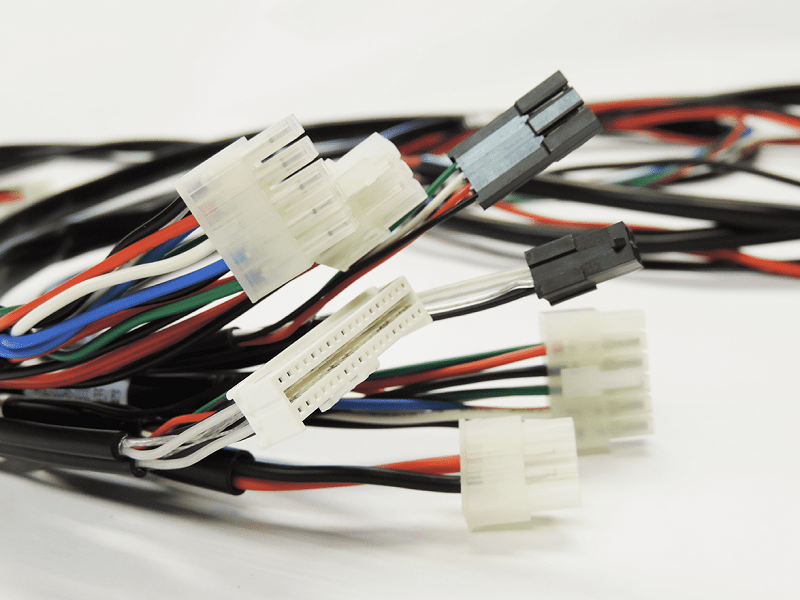
Building Cable and Wire Harness Assemblies: Solutions for High-Volume Production and Custom Needs
Cable and wire harness assemblies are vital components in a wide range of industries, from automotive and aerospace to medical devices and industrial machinery. These assemblies play a critical role in ensuring that electrical and data signals are transmitted reliably and efficiently within complex systems. Whether the need is for high-volume production or custom solutions for test equipment, instrumentation, or prototype development, building cable and wire harness assemblies requires a combination of precision, expertise, and the right technology.
High-Volume Production: Meeting the Demands of Mass Manufacturing
For industries that require cable and wire harness assemblies in large quantities, the ability to scale production without sacrificing quality is essential. High-volume production demands a streamlined process that maximizes efficiency while maintaining tight control over quality. This is particularly important in sectors like automotive manufacturing, where thousands of vehicles rely on identical harness assemblies to function correctly.
To meet these demands, manufacturers often utilize automated production lines equipped with advanced machinery capable of producing consistent, high-quality assemblies at scale. Automation in the production process helps reduce human error, increase speed, and ensure that each assembly meets strict industry standards. Additionally, the use of advanced materials and processes, such as laser stripping and automated crimping, ensures that the assemblies are durable, reliable, and capable of withstanding the harsh environments in which they operate.
Quality control is a critical aspect of high-volume production. Manufacturers implement rigorous testing protocols at various stages of production to ensure that each assembly meets the required specifications. This can include continuity testing, insulation resistance testing, and pull tests to verify the mechanical integrity of the connections. By maintaining strict quality standards, manufacturers can deliver cable and wire harness assemblies that meet the demands of mass production while ensuring reliability and longevity.
Custom Solutions for Specialized Applications
While high-volume production is essential for many industries, others require custom solutions tailored to specific applications. This is especially true for industries such as aerospace, medical devices, and test equipment, where standard assemblies may not meet the unique requirements of the project. Custom cable and wire harness assemblies are designed and built to accommodate specialized needs, whether for prototype development, new product introduction (NPI), or highly specific instrumentation.
The process of creating custom assemblies begins with a deep understanding of the application’s requirements. Engineers work closely with clients to determine the necessary specifications, such as the type of connectors, wire gauges, insulation materials, and environmental considerations. For example, in medical devices, the materials used must be biocompatible and capable of withstanding sterilization processes, while in aerospace, assemblies must be lightweight, durable, and resistant to extreme temperatures.
Once the specifications are defined, the design phase begins. Custom assemblies often require specialized components and configurations that are not available in standard products. This might involve sourcing unique connectors, designing custom enclosures, or even developing new manufacturing processes to meet the specific needs of the application. The flexibility of the design process allows for the creation of highly specialized assemblies that meet the exact requirements of the client.
In addition to customization for specific applications, these assemblies often play a crucial role in the development and testing phases of new products. For prototype and NPI builds, engineers may need to rapidly iterate on designs to refine the final product. Custom cable and wire harness assemblies enable this flexibility, allowing for quick adjustments and modifications as needed. This agility is crucial in industries where time-to-market is critical, and the ability to adapt quickly can provide a significant competitive advantage.
Balancing Customization with Quality and Compliance
Whether for high-volume production or custom solutions, maintaining quality and compliance with industry standards is paramount. Custom cable and wire harness assemblies must not only meet the specific needs of the application but also adhere to relevant industry standards and regulations. This includes standards like IPC/WHMA-A-620, which outlines the requirements for the design, manufacture, and testing of cable and wire harness assemblies.
To ensure compliance, manufacturers implement rigorous quality assurance processes throughout the production of custom assemblies. This includes detailed inspections, testing, and documentation to verify that each assembly meets the necessary standards. For industries like medical devices or aerospace, where failure is not an option, this level of quality control is essential.
In conclusion, building cable and wire harness assemblies, whether for high-volume production or custom solutions, requires a blend of advanced technology, expert engineering, and a commitment to quality. By understanding the unique needs of each application and leveraging the latest manufacturing techniques, manufacturers can deliver reliable, high-performance assemblies that meet the demands of even the most challenging environments. Whether mass-producing assemblies for the automotive industry or creating custom solutions for specialized instrumentation, the ability to build cable and wire harness assemblies that are tailored to specific needs is crucial for success in today’s competitive landscape.



